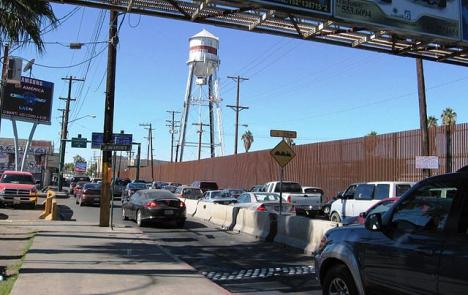
MEXICALI, Mexico — Hundreds of Haitians who usually fly or ship-smuggle their way into Guyana, in order to get across the border to Brazil en route to the US-Mexican border are being warned to desist from doing so, as the United States is no longer accepting them.
This is as a result of the unusually heavy influx of Haitians seeking a way into the United States, and the Department of Homeland Security’s decision to effect a policy change a few weeks ago.
Under a previous directive by President Barack Obama, Haitians who turn up at the US-Mexican border were automatically allowed to enter the United States under a special humanitarian parole visa, because the Obama administration had initially refused to return them to the seemingly never-ending economic hardships and political troubles that are facing their country.
Ever since the Obama administration had allowed this policy, thousands of Haitians have traveled to mainland South America via Guyana, from where they usually cross illegally into Brazil, before making a long river journey into Colombia, and then shuttle their way through Central America into Mexico.
The ten-week journey often brings them to the Mexican border city of Mexicali, which straddles the border with the United States, and from where US officials would generally grant entry to almost every fleeing Haitian that came along.
But with fewer than 100 days remaining in office, the Obama administration has decided to bring the humanitarian parole visa policy for Haitians to an end, which has now left dozens of would-be Haitian immigrants stranded on the border, while dooming hundreds more that are likely on their way.
And since most of them are not intent on settling in trouble prone Mexico, sympathizers are fearful that a humanitarian crisis is in the making, and which can run in reverse order from Mexicali right back to Guyana where their journey usually starts.
Many would have already been financially exhausted, and may more than likely be traveling with tickets that cannot return them to Haiti, or would not be able to pay a smuggling fish trawler to take them back from Guyana’s Essequibo Coast to Port-au-Prince.
In view of this, it has been suggested that Guyana may need to caution legally visiting Haitians against making the Mexico journey if they secretly plan to do so, or intercept and offer humanitarian assistance to those who may be caught while passing through the country illegally via the Essequibo or any other unauthorized ports.
Efforts by the Guyana Guardian to solicit a comment from the Department of Homeland Security on whether they are in communication with Guyana or Brazil on the effects of this recent US policy change have so far proved futile.
On the other hand, contacted officials with Guyana’s Immigration Department and the ministry of public security seem to be unaware that all along Guyana was being used as an transit point for hundreds of Haitians going on to the United States.
They were thus at a loss on how to comment on the issue.
Photo: Cars lined up on a Saturday morning, waiting to exit Mexicali, México, and enter Calexico, California. The street runs along the US-Mexico barrier fence. Photo: Thelma Datter/Wikimedia
Article courtesy Guyana Guardian


